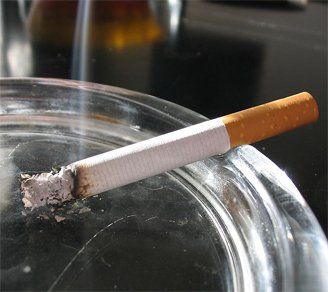Smoking Not a Risk Factor for Multiple Myeloma
Cigarette smoking is not a risk factor for multiple myeloma, according to the results of a pooled analysis of nine case-control studies.
Smoking does not appear to be a risk factor for multiple myeloma.

Cigarette smoking is not a risk factor for multiple myeloma, according to the results of a pooled analysis of nine case-control studies published in Cancer Epidemiology, Biomarkers & Prevention.
Gabriella Andreotti, MD, of the National Cancer Institute, and colleagues undertook this study in an effort to clarify any relationship between cigarette smoking and multiple myeloma. Previous research had indicated no relationship between the two, but many of these studies may have been underpowered to detect an association, according to the researchers.
For this pooled analysis, Andreotti and colleagues used questionnaire data that included information on cigarette smoking from nine studies that included 2,670 cases of myeloma and 11,913 control cases.
Results showed no increased risk of multiple myeloma among ever smokers (OR = 0.95; 95% CI, 0.87-1.05), current smokers (OR = 0.82; 95% CI, 0.73-0.93), or former smokers (OR = 1.03; 95% CI, 0.92-1.14) compared with never smokers.
“These associations did not change measurably when participants who ceased smoking within 2 years prior to the completion of the questionnaire were re-categorized as current smokers from former smokers,” the researchers wrote. “However, we did find that participants who stopped smoking after age 56 had an almost 40% higher risk of multiple myeloma than those who stopped at age 33 or younger.”
Interestingly, the data showed that women who were ever smokers (OR = 0.83; 95% CI, 0.72-0.96) and current smokers (OR = 0.71; 95% CI, 0.58-0.86) had significantly lower risk for multiple myeloma than did women who were never smokers. The researchers wrote that the reasons for this reduced risk were unclear, but added that the “null exposure-response relationships with smoking frequency, pack-years, and duration of smoking among women argue against smoking being a real protective factor.”